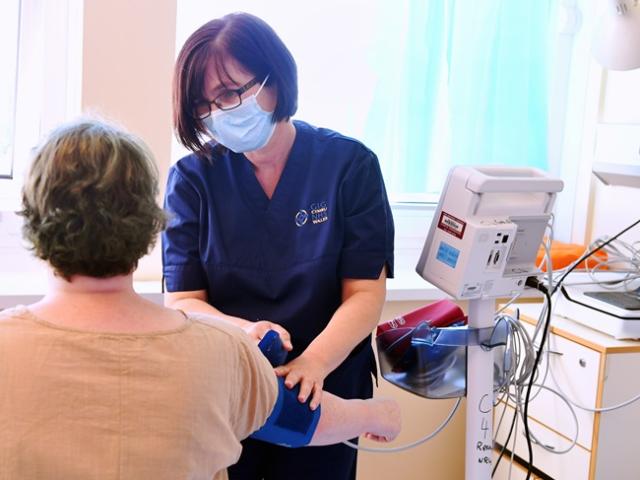
Using Medical Alerts During Natural Disasters
Natural disasters can strike at any time, leaving destruction in their wake and forcing individuals and families to quickly adapt to a challenging situation. Whether it’s a hurricane, earthquake, wildfire, or flood, these events can leave you without access to critical resources, including medical care. For people with medical conditions, using medical alerts during these times can be a lifesaver.
This survival guide explores how medical alert systems can play an essential role in natural disasters, offering peace of mind and potentially saving lives when every second counts.
What Are Medical Alerts?
Medical alerts are devices or systems designed to help individuals with health conditions or mobility challenges summon help quickly in case of an emergency. These systems are typically wearable, such as necklaces, bracelets, or pendants, and they are equipped with a button that the user can press to immediately alert emergency responders, caregivers, or family members.
Medical alert systems may also be integrated with features like GPS tracking, fall detection, and direct communication with emergency personnel. The goal is to ensure that a person in need of medical assistance can quickly and easily access help when it’s most needed.
Why Medical Alerts Are Crucial During Natural Disasters
Natural disasters often create chaotic and unsafe conditions, leaving people stranded or isolated. For those with pre-existing medical conditions or disabilities, the stakes are higher. In an emergency situation, waiting for help can be a matter of life and death. Here are several reasons why medical alerts are especially important during natural disasters:
1. Prompt Access to Help
In many natural disaster scenarios, time is of the essence. Roads may be blocked, phone lines may be down, or people may be injured or incapacitated. A medical alert system ensures that emergency services are notified immediately, even if the user cannot reach a phone. This is especially important for people who have conditions such as heart disease, diabetes, or respiratory issues, as they may need prompt medical attention.
2. Remote Locations and Limited Communication
During large-scale natural disasters, communication infrastructure can be severely impacted. Cell towers might be damaged or overloaded, leaving people unable to make phone calls. However, many medical alert systems use cellular or satellite technology to communicate with emergency services. This means that even in areas with poor reception, your medical alert device can still function, allowing you to call for help when no one else can.
3. Tracking Abilities
Medical alert systems with GPS tracking are incredibly valuable during disasters. If you’re displaced or unable to provide your location, the system can relay your position to emergency responders, even if you’re unconscious or unable to speak. This can significantly improve the efficiency and speed of rescue efforts, especially in cases where victims are stranded in remote or difficult-to-reach areas.
4. Fall Detection and Automatic Alerts
Falls are a common cause of injury during disasters, particularly during evacuations or in environments that are unstable due to wind, water, or debris. Many modern medical alert systems are equipped with fall detection technology. This means that if you fall and are unable to press the alert button, the system can automatically detect the fall and send an alert to emergency responders, reducing the risk of prolonged suffering or more severe injury.
5. Peace of Mind for Family and Caregivers
Family members or caregivers who have loved ones in disaster-prone areas can experience immense stress and anxiety. With medical alert systems, families can have peace of mind knowing that their loved ones are equipped to reach out for help in case of an emergency. Some systems even allow family members to monitor the status of their loved ones in real-time, so they know if help has been summoned.
Choosing the Right Medical Alert System for Natural Disasters
Not all medical alert systems are created equal, and choosing the right one is crucial for ensuring maximum safety during a disaster. Below are some key features to look for when selecting a medical alert system for use during emergencies.
1. Battery Life and Charging Options
During a power outage, your medical alert system may need to run on battery power. Be sure to choose a device with a long battery life, and check whether it includes a backup power option, such as a portable charger. Some systems also offer solar-powered charging stations, which can be an added benefit during a prolonged disaster situation.
2. Water Resistance
Natural disasters often bring rain, floods, or even hurricanes. For this reason, water resistance is an important feature to consider when selecting a medical alert system. Many modern devices are waterproof or water-resistant, allowing them to be worn in challenging weather conditions without the risk of malfunction.
3. Geographic Coverage
Before purchasing a medical alert system, confirm that it provides coverage in your area. Some systems rely on cellular networks, while others may use satellite connections, which can offer broader coverage. Be sure to choose a system that works in the locations where you might need help, especially if you live in a remote or rural area.
4. Two-Way Communication
In a natural disaster, the ability to communicate with emergency responders can be critical. Look for a system that includes two-way communication so you can speak directly with operators, providing vital information such as your medical history, location, or the type of emergency you’re facing. Many systems offer two-way voice capabilities or even video calling, which can help responders assess the situation in real-time.
5. Multi-Use Devices
Some medical alert systems can be integrated with other safety technologies, such as smoke detectors, carbon monoxide detectors, or weather alerts. These multi-use devices provide additional layers of protection during natural disasters, alerting you to potential hazards before they become critical. To learn more about these integrations and how they enhance safety, look these up for detailed information and available options.

Preparing for a Disaster: What to Do Before and After a Crisis
While a medical alert system is an invaluable tool, preparation is key. Here are some tips on how to prepare both yourself and your medical alert system for a disaster:
Before the Disaster:
- Ensure Your Device Is Fully Charged: Keep your medical alert device charged and ready to use. If it’s a wearable, make sure it’s easily accessible, even during an evacuation.
- Update Your Information: Make sure that your medical history, medications, and emergency contacts are up to date in your medical alert system’s database.
- Have Backup Supplies: If your device relies on batteries, keep spare batteries on hand or ensure you have alternative charging options.
After the Disaster:
- Stay Calm and Use Your Device: If you find yourself in an emergency situation, stay calm and use your medical alert system to call for help.
- Check on Loved Ones: If you’re in a safe position, check in with family members who might be at risk or in need of assistance.
- Evacuate Safely: If advised by authorities, evacuate your home using the safest routes. Ensure you have your medical alert device on hand throughout the evacuation process.
Conclusion
In the face of natural disasters, every second counts. Medical alert systems offer a lifeline for those with medical conditions or mobility challenges, ensuring that help is just a button press away. By understanding the importance of these systems, choosing the right one, and preparing ahead of time, you can help safeguard your health and survival in an emergency. With the right tools, you can navigate disasters with confidence and peace of mind.
